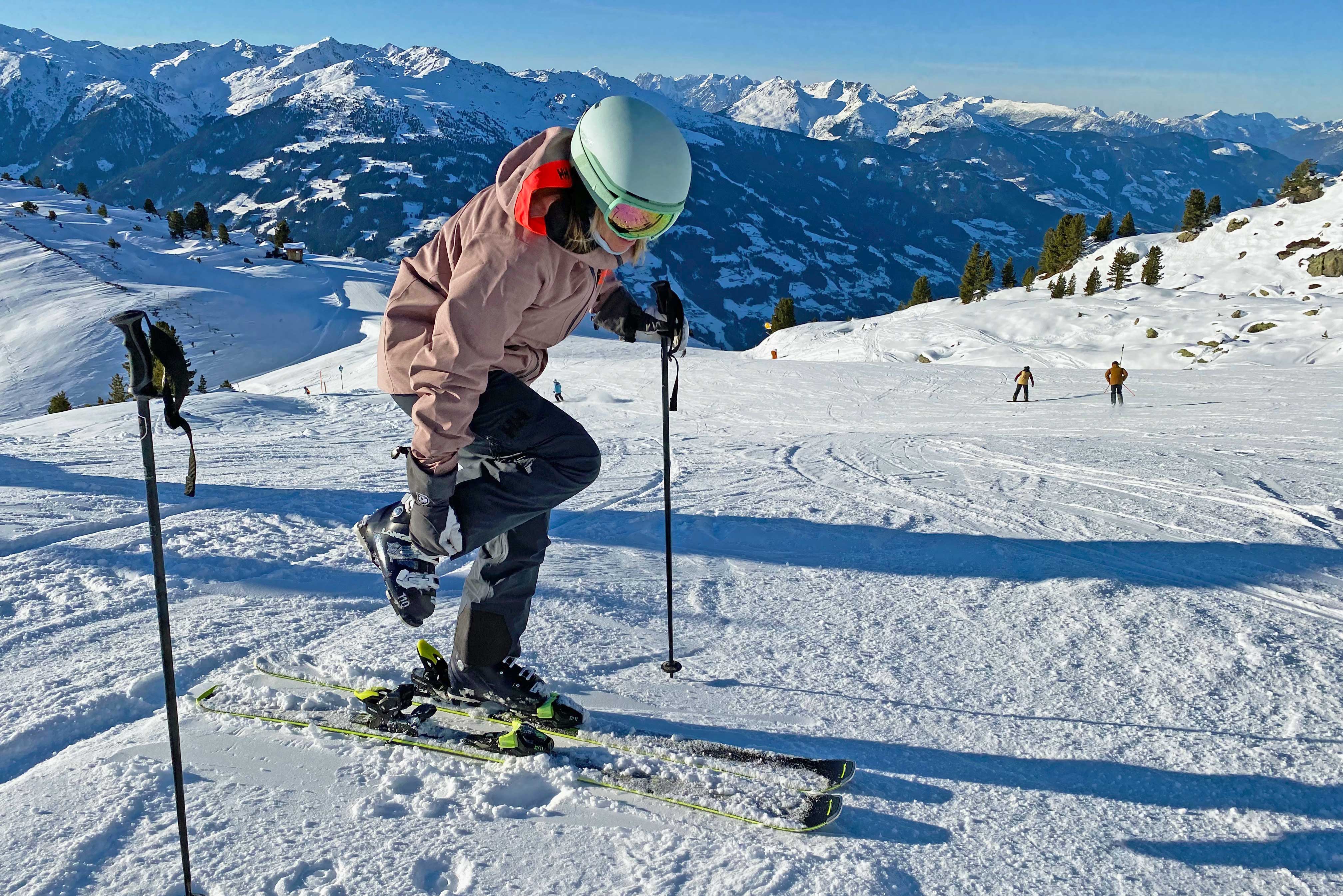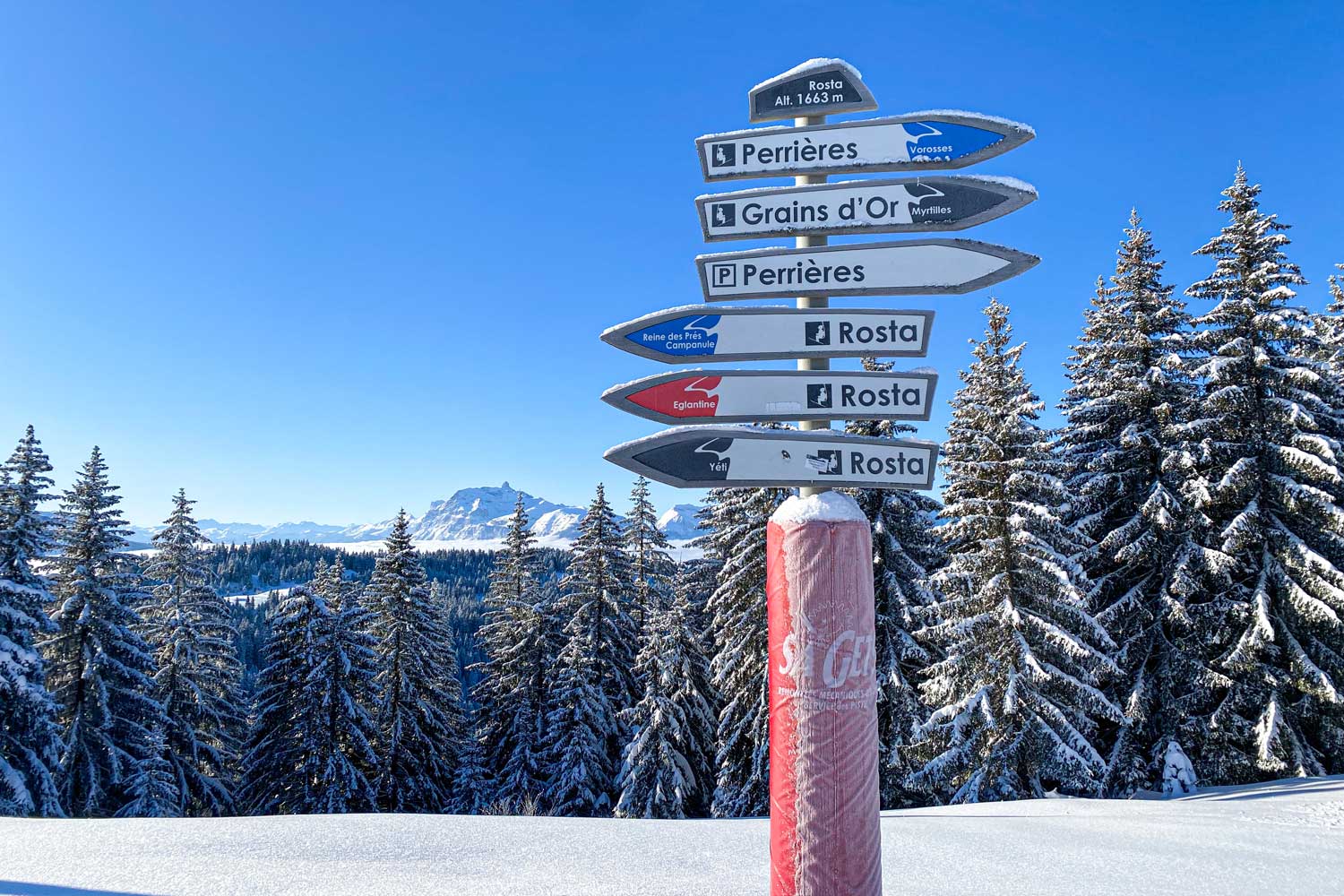
The Olympics made it look easy, skiers and snowboarders effortlessly whizzing down insanely steep slopes and beating each other by a matter of seconds. If you’ve ever tried tackling a real World Cup piste, you might have found out it’s not quite as simple as it looks. Thirsting to push your limits and follow in the tracks of the world’s greatest athletes? Here are 7 notorious World Cup pistes where you can show your friends and family what you’re made of. You might not master quite the same technique and elegance as the pros. But hey, if nothing else, it’s fun to imagine yourself up there on the podium afterwards!
1. The Streif
Probably the best-known skiing race on the planet, the Streif downhill is held in Kitzbühel every year and is the stuff of legends. Skiers sail at freakish speeds of up to 145km/h down the tricky “mousetrap” section, often flying 80m before touching the ground again. Although the piste is considered one of the most dangerous ski pistes in the world, with a gradient reaching 85%, parts of it can be tackled by average-joe skiers. However, hotspots such as the mousetrap are often icy and are best left to the pros!
- Length: 3312 m
- Gradient: 85%
- Difference in altitude: 860m
2. The Lauberhorn
The Lauberhorn piste at Wengen, Switzerland is the longest alpine skiing race track at almost 4.5km. With a gradient of more than 90%, it’s not surprising that the highest speed ever measured in the FIS Alpine Skiing World Cup (161.9km/h) was achieved here! When the Lauberhorn race is over, the piste opens to the public so we can show off our paltry skills. If you’re feeling a bit sub-standard, you can also book a ski instructor that will help you perfect your technique on this piste. Or you could just enjoy the views of the Eiger, Mönch and Jungfrau mountain peaks.
- Length: 4480 m
- Gradient: 90%
- Difference in altitude: 1028m
Lauberhorn, FIS World Cup piste
3. Kandahar
Another notorious ski piste: the Kandahar, in Garmisch-Partenkirchen. This World Cup track reaches a gradient of up to 92% in its “free fall” section and it’s not uncommon for skiers to hit speeds of up to 140km/h and jumps of up to 60m as they speed along this race course. The Kandahar is beloved by pros and amateurs alike but if you get intimidated, the conveniently placed mid-station of the Kandahar Express will let you discretely bow out of the most difficult parts.
- Length: 3300m
- Gradient: 92%
- Difference in altitude: 920m
The Kandahar in Garmisch-Partenkirchen
4. Saslong
The Saslong World Cup piste is located in Val Gardena, in South Tyrol. 3.5km long, with a maximum gradient of 56.9%, this ski slope is not for the faint of heart. Particularly challenging are the Spinel, the steepest point, and the Camel Hump, which sends skiers flying in long jumps of up to 70m. Go ahead and attempt this course, but be warned, this is not for beginners!
- Length: 3446m
- Gradient: 56.9%
- Difference in altitude: 839m
Saslong World Cup piste in Val Gardena
5. Planai
How do you make a ski race even more spectacular? By holding it during the night, of course – and that’s just what they do at Planai for the aptly-named Schladming Nightrace. This one is popular with international audiences and can have up to 50000 sets of eyes glued to the television, watching to see which athlete will pass first through the Skygate at the finish line. If you, too, want to ski under this impressive 35m-tall metal arch, you just have to master the 72% gradient on this steep World Cup Piste. Easy!
- Length: 3500m
- Gradient: 72%
- Difference in altitude: 1007m
6. Chuenisbärgli
The World Cup slope on Adelboden's Chuenisbärgli mountain is considered the toughest giant slalom track on the men’s FIS World Cup route. It may not be that long compared to other World Cup pistes – just 1430m – but it has a certain something to it, perhaps the fact that the start and the finish are both extremely steep, or maybe it’s the slope’s odd angle. The 60% incline is also nothing to sneeze at.
- Length: 1430 m
- Gradient: 60%
- Difference in altitude: 436m
Chuenisbärgli FIS piste
7. Cortina
The former Olympic piste at Cortina d'Ampezzo is now a stop on the ladies’ FIS World Cup tour. During races, professional skiers reach speeds of up to 130km/h and jumps of 40m. While it’s definitely tempting to go all-out, amateur skiers might want to repeat this piste a second time so they can slow down and enjoy the breathtaking views of the valley and the Dolomites.
- Length: 2822m
- Gradient: 64%
- Difference in altitude: 768m
FIS piste Cortina
At a glance: Steepest slopes in the Alps
For skiers and snowboarders who can’t get enough of that adrenaline rush, the Alps offer plenty of other steep black slopes where you can challenge yourself. The Gamsleiten in Obertauern reaches a staggering 100% gradient, and Mayrhofen’s Harakiri has a gradient of up to 78%. If you like moguls, then the Schweizer Wand in Les Portes du Soleil is the slope for you.
The Olympics made it look easy, skiers and snowboarders effortlessly whizzing down insanely steep slopes and beating each other by a matter of seconds. If you’ve ever tried tackling a real World Cup piste, you might have found out it’s not quite as simple as it looks. Thirsting to push your limits and follow in the tracks of the world’s greatest athletes? Here are 7 notorious World Cup pistes where you can show your friends and family what you’re made of. You might not master quite the same technique and elegance as the pros. But hey, if nothing else, it’s fun to imagine yourself up there on the podium afterwards!
1. The Streif
Probably the best-known skiing race on the planet, the Streif downhill is held in Kitzbühel every year and is the stuff of legends. Skiers sail at freakish speeds of up to 145km/h down the tricky “mousetrap” section, often flying 80m before touching the ground again. Although the piste is considered one of the most dangerous ski pistes in the world, with a gradient reaching 85%, parts of it can be tackled by average-joe skiers. However, hotspots such as the mousetrap are often icy and are best left to the pros!
- Length: 3312 m
- Gradient: 85%
- Difference in altitude: 860m
2. The Lauberhorn
The Lauberhorn piste at Wengen, Switzerland is the longest alpine skiing race track at almost 4.5km. With a gradient of more than 90%, it’s not surprising that the highest speed ever measured in the FIS Alpine Skiing World Cup (161.9km/h) was achieved here! When the Lauberhorn race is over, the piste opens to the public so we can show off our paltry skills. If you’re feeling a bit sub-standard, you can also book a ski instructor that will help you perfect your technique on this piste. Or you could just enjoy the views of the Eiger, Mönch and Jungfrau mountain peaks.
- Length: 4480 m
- Gradient: 90%
- Difference in altitude: 1028m
Lauberhorn, FIS World Cup piste
3. Kandahar
Another notorious ski piste: the Kandahar, in Garmisch-Partenkirchen. This World Cup track reaches a gradient of up to 92% in its “free fall” section and it’s not uncommon for skiers to hit speeds of up to 140km/h and jumps of up to 60m as they speed along this race course. The Kandahar is beloved by pros and amateurs alike but if you get intimidated, the conveniently placed mid-station of the Kandahar Express will let you discretely bow out of the most difficult parts.
- Length: 3300m
- Gradient: 92%
- Difference in altitude: 920m
The Kandahar in Garmisch-Partenkirchen
4. Saslong
The Saslong World Cup piste is located in Val Gardena, in South Tyrol. 3.5km long, with a maximum gradient of 56.9%, this ski slope is not for the faint of heart. Particularly challenging are the Spinel, the steepest point, and the Camel Hump, which sends skiers flying in long jumps of up to 70m. Go ahead and attempt this course, but be warned, this is not for beginners!
- Length: 3446m
- Gradient: 56.9%
- Difference in altitude: 839m
Saslong World Cup piste in Val Gardena
5. Planai
How do you make a ski race even more spectacular? By holding it during the night, of course – and that’s just what they do at Planai for the aptly-named Schladming Nightrace. This one is popular with international audiences and can have up to 50000 sets of eyes glued to the television, watching to see which athlete will pass first through the Skygate at the finish line. If you, too, want to ski under this impressive 35m-tall metal arch, you just have to master the 72% gradient on this steep World Cup Piste. Easy!
- Length: 3500m
- Gradient: 72%
- Difference in altitude: 1007m
6. Chuenisbärgli
The World Cup slope on Adelboden's Chuenisbärgli mountain is considered the toughest giant slalom track on the men’s FIS World Cup route. It may not be that long compared to other World Cup pistes – just 1430m – but it has a certain something to it, perhaps the fact that the start and the finish are both extremely steep, or maybe it’s the slope’s odd angle. The 60% incline is also nothing to sneeze at.
- Length: 1430 m
- Gradient: 60%
- Difference in altitude: 436m
Chuenisbärgli FIS piste
7. Cortina
The former Olympic piste at Cortina d'Ampezzo is now a stop on the ladies’ FIS World Cup tour. During races, professional skiers reach speeds of up to 130km/h and jumps of 40m. While it’s definitely tempting to go all-out, amateur skiers might want to repeat this piste a second time so they can slow down and enjoy the breathtaking views of the valley and the Dolomites.
- Length: 2822m
- Gradient: 64%
- Difference in altitude: 768m
FIS piste Cortina
At a glance: Steepest slopes in the Alps
For skiers and snowboarders who can’t get enough of that adrenaline rush, the Alps offer plenty of other steep black slopes where you can challenge yourself. The Gamsleiten in Obertauern reaches a staggering 100% gradient, and Mayrhofen’s Harakiri has a gradient of up to 78%. If you like moguls, then the Schweizer Wand in Les Portes du Soleil is the slope for you.















